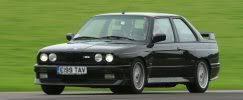Well, it's taken a bit longer then expected but it's finally time for another little update.
The last of the big obstacles to getting this car back on the road was always going to be
the engine management. As you've probably seen I've made a fair few changes to original
engine specification and as a result the original ecu in its standard form is no longer
suitable to take care of the fuelling and ignition requirements of the engine.........

As the engines breathing capabilities and compression ratio have both been increased
these two factors alone would have left the original fuel and ignition maps inside the
stock ecu unsuitable, however there has been one other major change in the hardware
that meant changes were going to be necessary. The stock ecu's main
method of measuring the amount of incoming air so it can figure out how much
fuel to inject is the airflow meter.........

and thanks to my new fancy airbox the airflow meter has now been relegated
to measuring the stagnant air in the bottom of the bin........

There's a clatter of different solutions to solving this particular problem and the
route I've chosen to take is an aftermarket ecu. The brand I've chosen to go with
is DTA and the model is an S40. It's the entry level ecu in the DTA range and although it
lacks some of the bell's and whistles of the more expensive ecu's out there it should
do everything I need it to just fine.
He said,
with his fingers crossed.

Unfortunately, as with most things in life, and, on reflection, almost everything
in this bloody restoration, things aren't just as simple as they first seem.
Along with the ecu change there was going to have to be some changes to the
rest of the hardware too.
As mentioned earlier the main method of measuring the quantity of incoming air
to the engine (the airflow meter) had been dumped because of it's restrictive nature,
so we're now left with the dilemma of how the new ecu is going to figure out how
much air is inbound.
And the answer is a throttle potentiometer or throttle "pot", if, like me, your mentally
challenged when it comes to speling.
The S14 engine already has a throttle pot of sorts bolted to the end of the throttle bodies........

But, if you crack it open what you'll find is it's actually a "throttle switch"
rather than a "throttle pot"...........

The standard ecu already has the airflow meter to tell it how much air is coming into the engine
so all it uses this switch for is to see if your foot is off the throttle or demanding full warp speed
with the throttle pedal planted deep into the carpet.
In the pictures below you can get an idea of how I think it works.
(not be be confused with how it probably really works.)
The body of the switch is bolted solid to the throttle bodies so it's not moving,
but, the little arm in the middle of it (purple) is stuck on the end of the
throttle butterfly shaft, so as you open and close the throttle the arm moves around too.
Along with the arm there a little switch and a set of contacts inside here too.
The ecu is constantly sending 5 volts to throttle switch (middle pin) and
when you have your foot off the throttle that little purple arm is resting on
the idle switch closing it's contacts.........

This allows the 5 volts to travel in from the middle pin, through the
closed switch and back out the bottom pin and off back to the ecu,
as shown in the pic above.
Once the ecu see's 5 volts coming back this wire it knows your off the gas
and the engine needs to idle, so it stops looking at the info coming from the
airflow meter and instead just concentrates on using
the idle control valve to keep the engine ticking over nicely.
The minute you start to press the throttle the little purple arm moves off this
switch and the contacts open again (can usually be heard as a little click).
From a tiny bit of throttle to almost full throttle the little arm moves around
inside not touching either the idle switch or the full throttle contacts.........

As the little arm isn't pushing either switch closed the 5 volts coming
in the centre pin has no route to take back to the ecu. Once the ecu
see's no voltage coming back from either wire it knows your motoring
along and it needs to pay attention to the airflow meter to see how much
air is coming in so it can calculate the fuel and spark.
The final use for the throttle switch is when you mash your foot to the floor.
As you pass the 90% throttle open point the little arm presses the set of
full throttle contacts closed. Once again the 5 volts coming in the centre pin now
has a route to make it back to the ecu..........

The 5 volts travels over the contacts and out the top pin back to
the ecu and once the ecu see's voltage coming back this wire it knows
that you require full warp speed and it adjusts the fuelling and spark
accordingly.


















































































































